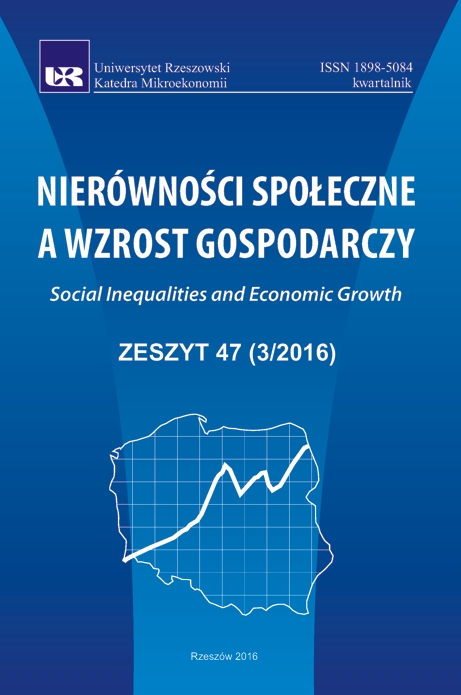Social Policy as an Instrument of European Union Cohesion
DOI:
https://doi.org/10.15584/nsawg.2016.3.14Keywords:
European social model, development barriers, convergence and divergenceAbstract
The subject of the paper is an analysis of the European integration process in the field of so-cial policy and an assessment of the significance of that policy in the European social dimension creation. The socio-economic cohesion indicators show a wide diversity among the Member States in terms of social protection level and their divergence has deepened since 2008. The analysis suggests that the recent financial-economic and debt crisis has substantially contributed to the decrease in economic and social cohesion of the EU which is one of the major factors hindering the development of the European social model at the current stage of integration. The EU countries can be divided into three groups: 1) the Northwest countries (9), 2) the Southern countries and Ireland (6), 3) Central and Eastern European countries (11). Countries from the 1st group (Scandi-navian countries, Belgium and the Netherlands, as well as France, Austria and Germany) have maintained their advantage in raising economic and social standards in comparison to the EU average (with the exception of the UK). In the 2nd group (the Southern countries) divergence indicators have increased, particularly in Portugal, Spain and Greece, however, divergent processes have also occurred in Italy and Cyprus. Central and Eastern European countries have been ex-tremely varied, but divergence indicators had been lowering in five of them and their position against the Southern countries has been improving. The subject of the paper is an analysis of the European integration process in the field of so-cial policy and an assessment of the significance of that policy in the European social dimension creation. The socio-economic cohesion indicators show a wide diversity among the Member States in terms of social protection level and their divergence has deepened since 2008. The analysis suggests that the recent financial-economic and debt crisis has substantially contributed to the decrease in economic and social cohesion of the EU which is one of the major factors hindering the development of the European social model at the current stage of integration. The EU countries can be divided into three groups: 1) the Northwest countries (9), 2) the Southern countries and Ireland (6), 3) Central and Eastern European countries (11). Countries from the 1st group (Scandinavian countries, Belgium and the Netherlands, as well as France, Austria and Germany) have maintained their advantage in raising economic and social standards in comparison to the EU average (with the exception of the UK). In the 2nd group (the Southern countries) divergence indicators have increased, particularly in Portugal, Spain and Greece, however, divergent processes have also occurred in Italy and Cyprus. Central and Eastern European countries have been extremely varied, but divergence indicators had been lowering in five of them and their position against the Southern countries has been improving.Downloads
Download data is not yet available.
Downloads
Published
2020-11-11
How to Cite
Mucha-Leszko, B. (2020). Social Policy as an Instrument of European Union Cohesion. Social Inequalities and Economic Growth, 3(47), 193–204. https://doi.org/10.15584/nsawg.2016.3.14
Issue
Section
Articles
License
Copyright (c) 2016 University of Rzeszow

This work is licensed under a Creative Commons Attribution-ShareAlike 4.0 International License.


